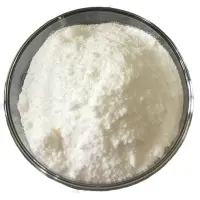Cell Sub-Journal: Chinese scientists identify human-derived single-domain antibodies targeting SARS-CoV-2
-
Last Update: 2020-05-28
-
Source: Internet
-
Author: User
Search more information of high quality chemicals, good prices and reliable suppliers, visit
www.echemi.com
May 23, 2020 /PRNewswireBIOON/--- Recently, new coronavirus disease (CO) caused by the virus SARS-CoV-2 (also known as 2019-nCoV, or HCoV-19) The VID-19 outbreak marks the third major outbreak caused by a new type of coronavirus in nearly 20 years, following severe acute respiratory syndrome (SARS)-CoV and MERS coronavirus (MERS-CoV)In addition, SARS-CoV-2 is one of the most contagious coronaviruses ever found, and COVID-19 is rapidly developing into a global pandemicThese facts show that coronavirus continues to be a great threat to public health and that new prevention and treatment strategies are urgently neededmonoclonal antibody (mAb, or monoantigen) is the largest and fastest growing area in the pharmaceutical industryDuring previous SARS and MERS outbreaks, some neutralized monoclonal antibodies were developed and their potential in treating coronavirus infections was confirmedNevertheless, their clinical use is hampered by the time-consuming and expensive production of antibodies in eukaryotesMass production of mAb typically takes at least three to six months, which makes it difficult to produce in a timely manner in a pandemic situationan attractive alternative to mAb is a single-domain antibody (single-domain body) made from camel immunoglobulin, called a VHH ornano
antibody, which is the smallest natural antigen binding protein domain with a molecular weight of 12 to 15 kDaTheir small size offers some advantages over conventional mAb (molecular weight of 150 kDa), including a larger number of accessible epitopes, relatively low production costs, and ease of rapid production in the primary nuclear biological expression system in kilogram scalesWhat's more, becausenano
antibodies are small in size and have good biophysical properties, they can be drugged by inhalation, which makes them particularly suitable for the treatment of respiratory diseasesFor example, inhaled anti-respiratory syncytial virus (RSV)nano-
antibody ALX-0171 developed by Ablynx has been found to have a strong antiviral effect in animal models and to reduce signs and symptoms of RSV infection In addition, in clinical trials , it is well tolerated at all doses when inhaled These findings confirm the feasibility of delivering nanoantibodies by inhalation However, the camel source of nanoantibodies limits their use in humans as therapeutic drugs In order to reduce the risk of immunogenicity, the humanization strategy of camel nanoantibodies has become an available strategy in recent years, but this process requires a lot of time and labor Humanized nanoantibodies also retain a small amount of camel amino acid residues, especially in the frame area 2 (FR2) with several specific "iconic" residues (F37, E44, R45, and G47) to maintain the solubility of the proto-antibody and antigen binding affinity images from Cell Host and Microbe, 2020, doi:10.1016/j.chom.2020.04.023 in a new study , researchers from Fudan University in China and Shanghai Jianxuan Biotech Co., Ltd have successfully developed an efficient way to rapidly develop SARS-CoV-2-specific human-sourcemono monodomain antibodies that may not only respond to COVID-19 in the event of a current outbreak, but may also strengthen their preparedness and response to future new coronaviruses The findings were published online May 14, 2020 in the journal Cell Host and Microbe under the title "Cude of Human Human-Domain Anti-Anti-ConsSARS-CoV-2" very interesting, there are significant differences in the antibody maps obtained by using SARS-CoV-2 S1 or RBD proteins as antigens The antibodies found in s1 protein screening are very diverse, covering four different epitopes (competition groups A, B, D and E) on SARS-CoV RBD In contrast, most of the antibodies found in the RBD protein screening belonged to the competition group A, represented by n3021, of which n3021 was also the most important antibody after two rounds of screening In addition, group A antibodies showed moderate competition with ACE2 in the binding of RBD, but were shown to be ineffective virus neutralizing agents This phenomenon is very different from sars-CoV, where the advantage of antigen loop in RBD makes it relatively easy to separate powerful SARS-CoV neutralizing antibodies from complementary determining region (CDR) libraries, species, tetrastage structures, and technologies used to obtain antibodies Similarly, the authors previously isolated antibodies from the initial antibody library using MERS-CoV S1 or RBD, and then screened either of these two antigens to accurately target 90% of the receptor binding sites in RBD and effectively neutralize the antibodies of the virus it has been suggested that viruses such as SARS-CoV have not yet evolved to escape the immune recognition of individual sites where the immune system directly controls the mechanism stoicism of the virus It should be noted that the difference in immunogenicity of RBD is based only on in vitro experiments and may not be correlated with the body fluid immune response in the body Therefore, it is urgent to study the immunogenic characteristics of SARS-CoV-2 RBD, especially the potential antigen epitope and non-moderate epitope also striking is the combination of SARS-CoV-2-specific neutralizing antibodies from competing groups D and E that cannot compete with ACE2 against SARS-CoV-2 RBD This phenomenon is rarely observed in SARS-CoV, which confirms the unique immunogenicity of SARS-CoV-2 Further research is needed to understand the basic mechanisms for regulating these different neutral SARS-CoV-2 antibodies and non-neutral and SARS-CoV-2 antibodies, which may be important for the development of effective vaccines more interesting, the competing groups D antibodies n3088 and n3130 were found to neutralise SARS-CoV-2 by targeting the "hidden" epitope located in the interface of the protoprotein tripolymer Single-resistant CR3022 can also identify this epitope, but can not neutralise SARS-CoV-2, which suggests that small-size single-domain antibodies have the advantage of targeting recessive epitope In recent years, the authors and several other research groups have also observed this recessive tripolymer interface epitope in the study of influenza antibodies Such epitopes are likely to be important in the study of coronaviruses, and n3088 or n3130 may be ideal for use in collaboration with other SARS-CoV-2 neutralizing antibodies, especially neutralizing antibodies with ACE2 competitively binding targets whole-human single-domain antibodies offer the possibility of preventing and treating COVID-19 First, antibodies obtained entirely from human sequences will be less immunogenic than camels or human-derived nanoantibodies, resulting in higher safety and efficacy when used in humans In fact, despite human-induced treatment, the first nanoantibody approved by the U.S Food and Drug Administration (
FDA ) --- caplacizumab --- still contains multiple camel amino acid residues to maintain antigen binding affinity Second, the smaller size and favorable biophysical properties allow large-scale production of monodomain antibodies in the primary nuclear expression system for several weeks, allowing them to be used quickly in the event of an outbreak Furthermore, single-domain antibodies can be delivered to the lungs by inhalation, which may provide considerable benefits for the treatment of COVID-19, including rapid effectiveness, low systemic exposure and the presence of high concentrations of therapeutic drugs at the site of the disease Finally, single-domain antibodies can be used alone or in combination with other neutralizing antibodies Their small size makes them ideal for producing bispecific or multispecific antibodies to prevent virus escape mutants from appearing They can also be easily further moderated by increasing the binding site For example, the trivalent nanobody ALX-0171 increased the medium-to-moderate activity of RSV-A by 6000 times compared to its unit price form, and the medium-to-v-B activity increased by 10,000 times , the authors developed a versatile platform for rapid separation of whole-human source monodomain antibodies and applied them to the screening of anti-SARS-CoV-2 antibodies These whole-human-sourced monodomain antibodies may represent promising candidates for the prevention and treatment of COVID-19 and promote vaccine development (Bio Valley Bioon.com) Reference: Yanling Wu et al.
A of Human-Domain Antibodies vs SARS-CoV-2 Cell Host and Microbe, 2020, doi:10.1016/j.chom.2020.04.023.
This article is an English version of an article which is originally in the Chinese language on echemi.com and is provided for information purposes only.
This website makes no representation or warranty of any kind, either expressed or implied, as to the accuracy, completeness ownership or reliability of
the article or any translations thereof. If you have any concerns or complaints relating to the article, please send an email, providing a detailed
description of the concern or complaint, to
service@echemi.com. A staff member will contact you within 5 working days. Once verified, infringing content
will be removed immediately.







